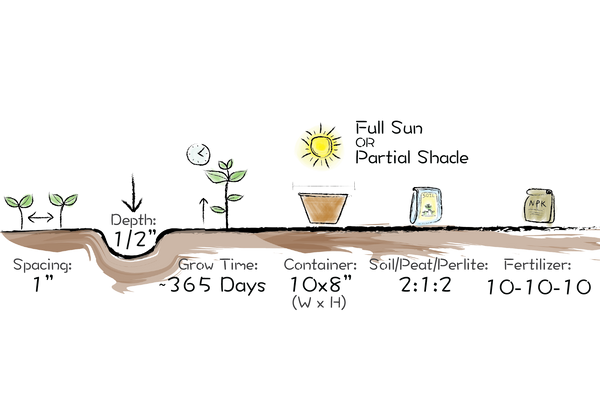Wild Bergamot - Bee Balm Guide

A member of the Mint family, Wild Bergamot Monarda will not only brighten up your gardening space with its light purple petals, but their natural attraction from butterflies and hummingbirds will turn your yard into a cartoon fairyland. If that doesn't brighten your day, steep Wild Bergamot for a tea that has a history of use in helping with colds, stomach distress, and sore throats.


TO SOW
Bee balm grows best in warmer weather between 55°F-80°F. They do great in containers and small gardens. Bank on Seeds recommends transplanting.
If Direct Seeding
- Direct seed outside 4-6 weeks after last frost date; or
- Direct seed into a container 8-10 inches deep and wide anytime of the year. It can be placed outside when the temperature is between 55°F-80°F; or
If Transplanting
Begin the growing season early and start the bee balm seeds indoors in trays or pods 10-12 weeks before the last frost date; germination is best between 60°F-75°F. It can be transplanted outside 16-18 weeks later.
Sow seeds ¼ inch deep and an inch apart with rows spaced 12-24 inches apart. Germination will take 7-14 days.
TO GROW
Wild Bergamot bee balm likes well-draining soil rich in organic matter. They also love full sun but can tolerate partial shade. Water thoroughly to keep the soil evenly moist and do not let it dry out fully. Check the top 2-3 inches of soil and if it’s dry, then water it. This is especially important in the first year of beebalm for strong root systems. Make sure to water at the base and not from above to prevent rot or disease.
Adding a layer of mulch helps in maintaining the moist soil and preventing weed growth. Fertilizer is only necessary once a year and any general purpose 10-10-10 or 5-5-5 fertilizer can be applied.
TO REAP
Bee balm is full grown (mature) in 365 days. However, you can start picking off leaves as early as month 8 – picking leaves regularly encourages more growth and vigor. It will start to grow beautiful purple flowers in the second year and increase in size and bushiness. Mature plants at 3 or 4 years can be divided to make new plants.
PESTS/DISEASES
Powdery mildew –keep free of weeds and debris, don’t handle when leaves are wet, avoid overwatering, don’t water from above the foliage, remove diseased or dead foliage
*Plant Bee balm with tomatoes and peppers. It also makes great cut and come back flowers. *

